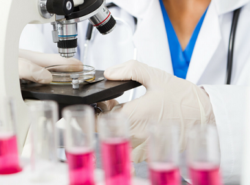
Why do cancers in mammograms sometimes get missed?
Published: 10/7/19 11:23 PM

Patrick Brennan
An estimated 18,087 females and 148 males will develop breast cancer in Australia in 2017, a 13.2% increase from 2017. With effective early detection and treatment strategies in place, it is estimated that only only 6.5% deaths are estimated to result from breast cancer from these statistics. However 5-50% of cancers are missed on screening. There is also another subset of women with cancers whose previous screens had no visible signs of cancer, yet a radiologist’s instinct based on the ‘gist’ of the image will suggest that there is still something odd about the image. This gist phenomenon has never been explored even though it could yield major benefits when describing a woman’s risk profile.
This project led by NBCF-funded Professor Patrick Brennan proposes to study previous mammograms with “visible signs of cancer”, which were reported as normal, to identify factors that contribute to missed cancers. With this information, technological and educational interventions can be tailored to ensure early diagnosis of these cancers.
In addition, the study will establish whether previous mammograms with “no visible sign of cancer” contain information that can predict a woman’s risk of developing cancer in the future, so that these can be characterised and used to tailor screening strategies.
This work will result in tailored radiologist training and computer-aided algorithms to better recognise “missed” cancers, identify women at a higher risk of future cancers and facilitate early detection and treatment of the disease.
